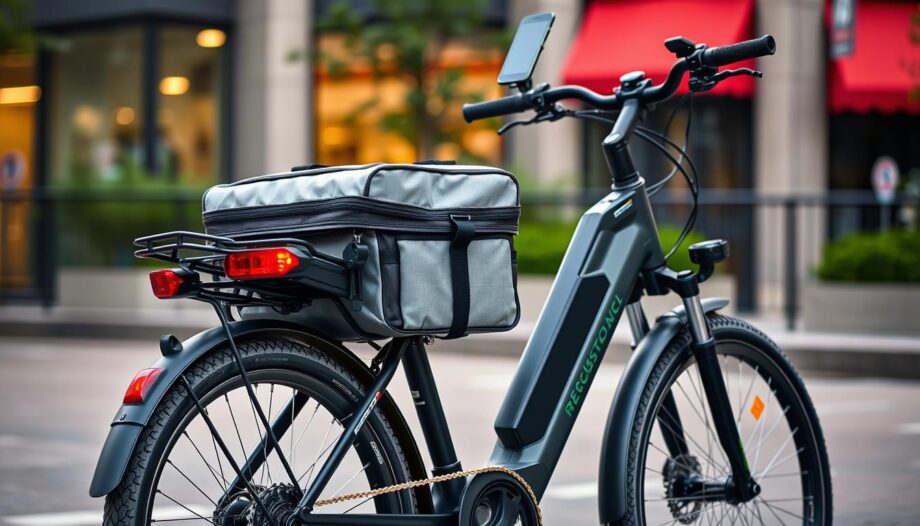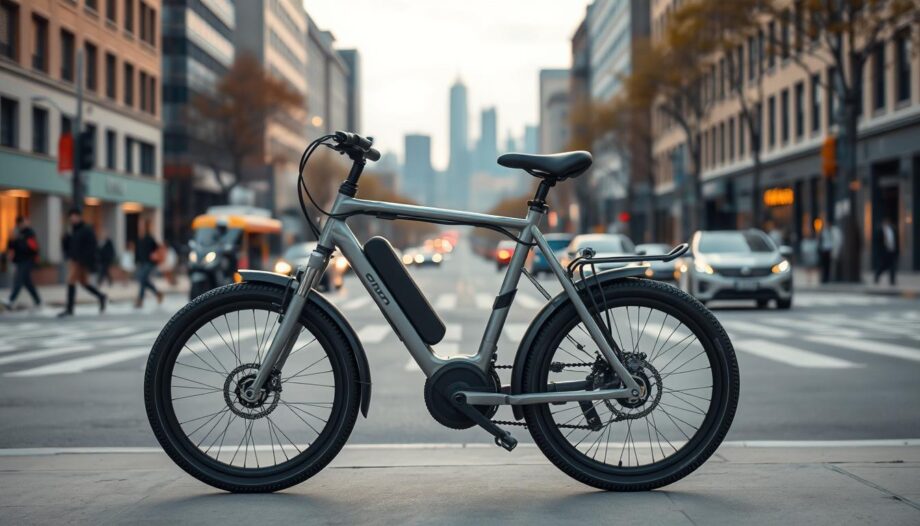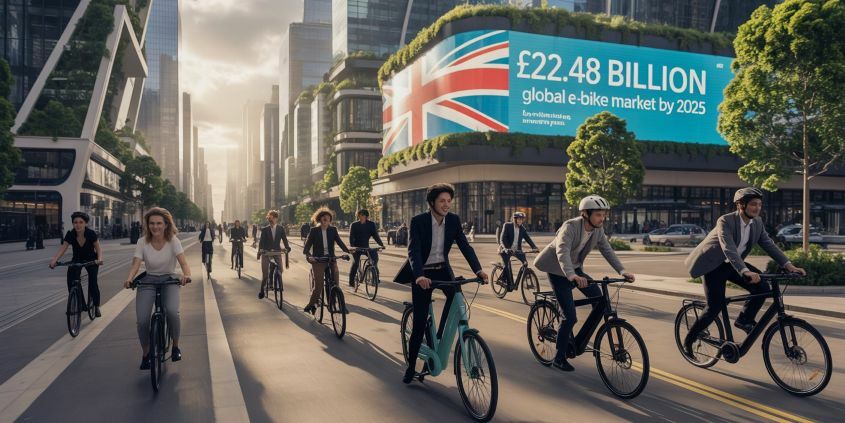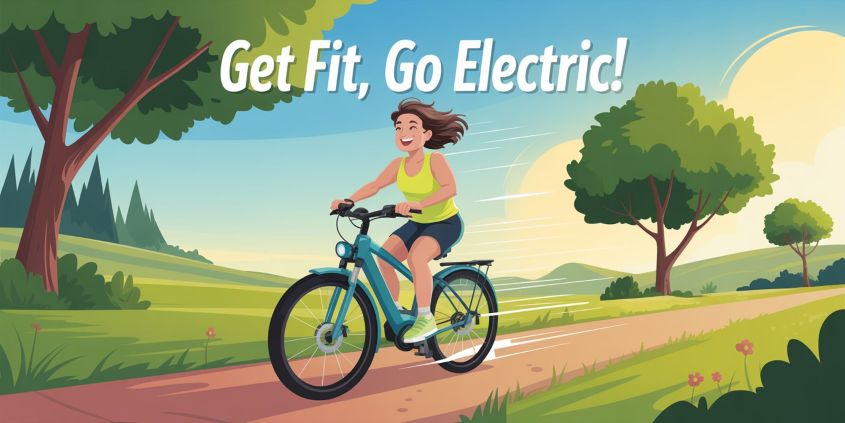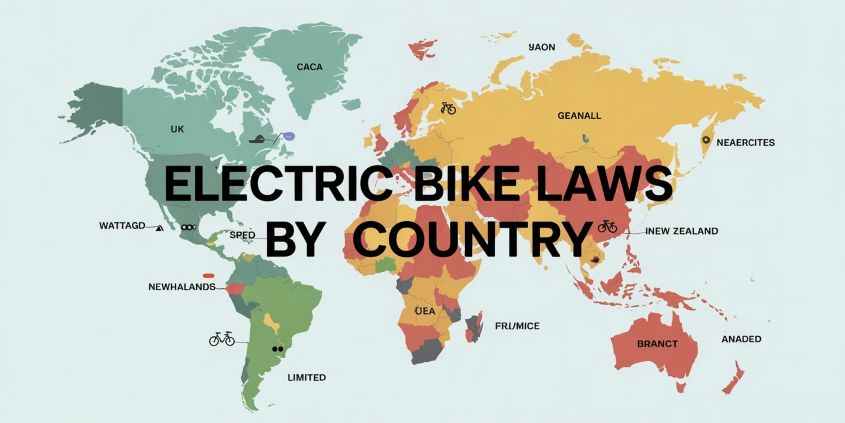Electric bikes run on Brushless DC (BLDC) motors. These motors, more efficient than their older counterparts, come in several forms, namely mid-drive, direct-drive hub, and geared hub motors. Each of these motors packs its own benefits—for instance, mid-drive motors aid weight distribution, while direct-drive hub motors can crank up the torque. However, what might surprise you is the role these BLDC motors play in influencing your e-bike’s battery life and overall performance. That’s where we start to dive into motor efficiency.
The motor common size bike motors are 250w as this is the legal limit in the UK, but it’s quite common to see 350w, 500w, 750 and 1000w, although I am sure this will change over time, the 1000w motors tend to be part of an ebike kit, not often are they commercially available, there is also a whole range of battery capacity I won’t go over in this article, it would make it too long.
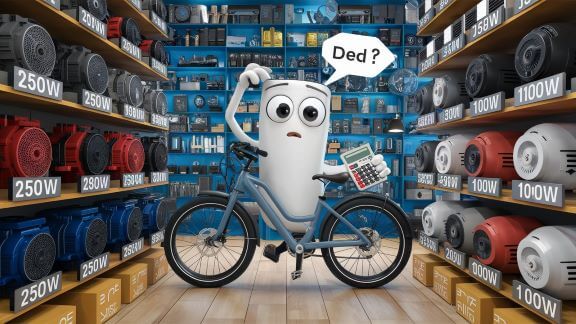
You can read about what electric bicycles are specifically here.
Different Types of Electric Bike Motors
Let’s take a look at the three primary types of electric bike motors – mid-drive, direct-drive hub, and geared hub motors. Each has its distinct design and functionality, contributing to the unique riding experience they offer. There has not been that much innovation in the last few years around motor technology in the electrical-assist cycling world.
Mid-Drive Motors: These powerful motors are positioned at the bike’s bottom bracket, providing optimum weight distribution for smooth handling and stability. By leveraging the bike’s gears, mid-drive motors can easily climb steep hills and navigate challenging terrains with greater efficiency.
Imagine it as having extra muscle power where you need it most—when additional torque is required to conquer rugged landscapes or steep ascents. The mid-drive motor boosts overall performance, making it an excellent choice for riders who frequently encounter diverse riding conditions.
Mid-drive motors also allow for quick and easy wheel changes, as the motor isn’t directly connected to the wheel hub, eliminating the need for special wires or complex adjustments during maintenance.
Direct-Drive Hub Motors: Unlike mid-drive motors, direct-drive hub motors are situated inside the bicycle wheel. This design offers high torque outputs, making them well-suited for smooth and consistent acceleration without making much noise.
It’s like having a silent powerhouse at your disposal, propelling you forward with ease and minimal effort. This type of motor is particularly beneficial for long-distance cruising and leisurely rides through flat surfaces or urban environments.
However, due to their integrated position within the wheel, direct-drive hub motors tend to add more weight to the bike’s rear end, potentially impacting its balance. This can make handling slightly sluggish compared to bikes equipped with mid-drive motors that offer a more evenly distributed weight.
Geared Hub Motors: Geared hub motors employ a system of internal gears within the motor to optimise speed and torque outputs. This results in a more efficient use of power while maintaining a compact size.
Think of it as having different gears in a car; the motor can efficiently adjust its speed according to varying terrain or riding requirements. Geared hub motors are ideal for city commutes and leisurely rides due to their ability to maintain a steady pace without consuming excessive energy.
One significant advantage of geared hub motors is their ability to support regenerative braking systems, enabling the motor to act as a generator and recharge the battery when coasting or braking. This not only enhances energy conservation but also extends the overall range of the electric bike.
Understanding how each type of electric bike motor functions provides valuable insight into selecting the right model based on individual riding preferences and terrain requirements. Let’s explore further how these differences impact performance and efficiency in various real-world scenarios.
- A study conducted in 2019 found that over 90% of electric bicycles are equipped with brushless DC motors as their main propulsion system.
- The brushless DC motor offers a high torque to weight ratio, which eliminates the need for bulky, heavy gears when compared to conventional bicycle motors.
- According to a report published in 2020, electric bicycles with hub motors are now being offered with power levels up to 2000 watts, allowing riders to reach speeds upwards of 50 mph (80 km/h).
How E-Bike Motors Work
Electric bike motors allow riders to get an extra boost on their rides, thanks to the power of electricity. Although electric bike motors are often compared to motorbike motors due to their similar functions, there are significant differences between them. For starters, electric bike motors typically have much lower speeds than motorbike motors. This makes them more suitable for roads where cyclists and pedestrians are present, as they can be operated in a way that balances safety with convenience.
The technology of electric bike motors also differs depending on the type of motor used. Some use internal combustion engines which burn fuel, while others use an external force such as pedalling to generate power. Electric bikes may even combine both types of technology. Internal combustion engines tend to offer more control over speed and direction but need more maintenance than other types of solutions. External forces such as pedalling are less powerful but can help conserve energy over longer journeys and don’t require additional maintenance.
Another consideration when comparing electric bikes and motorbike motors is cost. Electric bike motors tend to be cheaper than motorbike motors due to the cost of components and the limited power output of electric bikes. This means that electric bikes can offer added convenience at a fraction of the price of a motorbike while also featuring user-friendly displays and controller options suited for a variety of riders.
These advantages should be carefully considered when debating between electric bike vs bicycle electric motors. Despite some clear differences between them when looking at performance, cadence, or cost, both types of technology can provide efficient and convenient transportation solutions for riders and commuters alike; it ultimately comes down to personal preference and budget restrictions as to which solution best suits an individual’s needs. A sensor system may also play a significant role in these choices.
Now that we have taken a look at how electric bike motors work and compared them to bicycle electric motors, let’s explore a different kind of power source: pedal-assist vs battery-powered motors.
Pedal-Assist vs Battery-Powered Motors
When it comes to motor technology in electric bikes, one of the main considerations is whether to go with a pedal-assist or battery-powered motor. Both motor types offer noteworthy advantages and drawbacks that must be weighed when making the best decision for your needs.
Pedal-assist motors are connected to the crank system of the bike and use sensors that react to how much pressure you exert on the pedals. As a result, they don’t consume any battery power unless you pedal, thereby increasing the range and ensuring better control of performance when going uphill or accelerating faster. The cadence of your pedalling also plays a crucial role in determining the assistance level of these motors. On the downside, these motors might not have enough power for taller riders who weigh over 150 pounds or 200 pounds, depending on the model. Plus, these motors generate less torque than battery-powered motors.
Battery-powered motors remain independent from the crank system of the bike, so there is no need to pedal. As a result, these electric motors can propel the rider at higher speeds than pedalling alone would allow thanks to their greater torque levels, but require more frequent recharging than pedal-assist models due to increased energy consumption.
In conclusion, while both types of electric bike motors have their merits, many riders feel that an optimal choice combines a rechargeable battery with a low-powered electric motor assist, incorporating a sensor to detect pedaling cadence, so that it works more like an extension of their pedalling efforts instead of an alternate source of propulsion. This way, bicyclists can enjoy an efficient form of transportation with great performance regardless of terrain or inclines. From here, we can move on to further explore how operating speed and torque directly influence the quality and usability of electric bike motor technology.
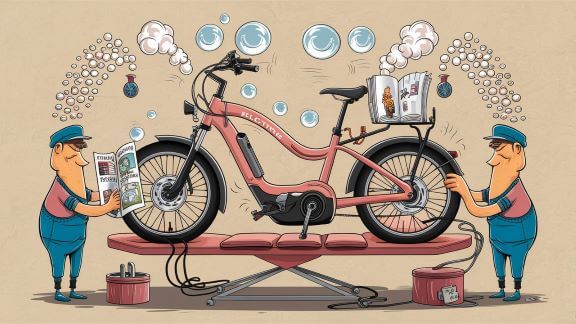
Benefits of Brushless Motors
When it comes to electric bike motor technology, brushless motors reign supreme. Our electric bikes are powered by these marvels of engineering, and for a good reason! Brushless motors, also known as BLDC (Brushless DC) motors, offer a multitude of advantages that directly impact the performance and efficiency of electric bikes.
First and foremost, the absence of brushes to transfer energy to the rotor sets brushless motors apart from their brushed counterparts. This crucial difference results in efficient operation with greater speed control and precision. The reduced mechanical wear and tear associated with brushless motors leads to enhanced durability, making them a reliable choice for powering electric bikes.
Furthermore, brushless motors are not only more durable but also require minimal maintenance compared to their brushed counterparts. As they don’t have brushes that can wear out over time, they demonstrate a longer lifespan, contributing to the overall longevity of the electric bike. Our commitment to using brushless motors in our electric bikes speaks to our dedication to providing sustainable, long-lasting solutions for modern transportation needs.
Efficiency is yet another hallmark of brushless motors. By optimising energy consumption, these motors significantly extend battery life and enhance the overall performance of electric bikes. This means longer rides on a single charge and improved power delivery when cruising through challenging terrains. The impressive efficiency of brushless motors directly translates to a seamless and enjoyable riding experience for our users.
In essence, the integration of brushless motors in our electric bikes reflects our unwavering focus on harnessing cutting-edge technology to deliver high-performance, efficient, and environmentally friendly modes of transportation. Our commitment to utilising brushless motors extends beyond embracing the latest advancements; it’s about providing our riders with an unparalleled experience that seamlessly combines sustainability, reliability, and exhilarating performance.
By harnessing the exceptional capabilities of brushless motors, we continue to push the boundaries of what’s possible in electric bike technology delivering a ride unlike any other.
As we explore new horizons in electric bike technology, let’s now delve into the interplay between weight, power, and speed a trifecta that defines the riding experience on our electric bikes.
Interplay Between Weight, Power, and Speed
When it comes to electric bike performance, three key factors play a crucial role: weight, power, and speed. Understanding how these elements interact with different motor technologies can help us make informed decisions when choosing the right e-bike for our needs.
Let’s start with weight. The weight of an e-bike has a significant impact on its overall performance. Heavier bikes require more power to accelerate and climb hills, while lighter bikes are generally more manoeuvrable and efficient. The type of motor technology used can offset the effect of weight to some extent.
For instance, mid-drive motors provide better weight distribution since they’re located near the bike’s centre. This makes them suitable for both speed and power as they can leverage the bike’s gears to climb steep slopes efficiently. On the other hand, geared hub motors prioritise torque and efficiency, making them ideal for urban commuting and moderate terrains where agility and quick acceleration are valued over sheer power.
As we consider the power aspect, it’s essential to recognise how different motor technologies deliver power to the e-bike. While mid-drive motors supplement the rider’s pedalling power within the chain drive, direct-drive hub motors offer higher torque outputs due to their design without moving parts aside from bearings.
Lastly, let’s talk about speed. Motor technology directly impacts the speed capabilities of an electric bike. Mid-drive motors, due to their connection with the bike’s gearing system, are capable of higher speeds compared to hub motors. This is especially relevant for riders seeking faster acceleration and top speeds.
By understanding the integrated relationship between weight, power, speed, and motor technology, we can make informed choices that align with our specific riding needs and preferences. The type of terrain you’ll be covering, your desired level of exertion during rides, and your need for speed all interconnect with the varied capabilities offered by different electric bike motors.
In navigating the electrifying world of e-bikes, understanding how electric bike motors work is only half of the equation. Now we turn our attention to the potent energy source that fuels these revolutionary machines – lithium batteries.
The Future of Motor Tech
It is hard to say where this innovation will go, I think there will be more research into lighter and more electrically economical motors, obviously, manufacturers are always trying to make this kind of technology cheaper, so more people can afford this but motorized items have been around for a long time, even you starter motor in your car is a motor.
With electric bike cycling being a very eco-friendly way to get around, motor technology is going to improve as there are only going to be more sales around ebikes, you can check out the latest figures around ebikes and you can see their sales climb each year
You can find out about the other big topic battery technology here, and please share our biking site with others.
Most Common Questions
How does electrical bike motor technology work?
Electric bike motor technology works by converting electrical energy from a battery into mechanical power to propel the bike. The motor uses magnets and coils to create a magnetic field, which generates rotational motion when an electric current passes through the coils. This motion is transferred to the bike’s drivetrain, providing assistance to the rider’s pedalling or powering the bike entirely in some models. Modern electric bike motors can deliver high torque, allowing for efficient climbing and acceleration. With advancements in lithium-ion battery technology, electric bikes can now offer longer ranges and faster charging times, making them a practical and sustainable transportation option. According to recent studies, electric bikes have experienced a significant increase in popularity, with global sales surpassing 40 million units in 2023 alone.
What materials and components are used to construct e bike motors?
Electric bike motors are typically constructed using various metals and components, such as copper wiring, magnets, aluminium cooling fans, electric brushes, and stator coils. Copper wiring is used to create the electrical circuit and efficiently conduct electricity, while magnets help generate torque. Aluminium cooling fans draw air through the motor and help keep it cool during operation. Electric brushes help form an electric circuit from the stator windings to the rotor. Finally, stator coils provide the electric current required for motor operation.
These materials must be of high quality and of specific dimensions in order for the motor to remain efficient and reliable over time. The main goal of constructing an electric motor should always be to achieve maximum efficiency and long-term durability.
What are the benefits of ebike motors versus traditional internal combustion engines?
The biggest benefit of electric bike motors vs. traditional internal combustion engines is that the former are far more efficient and less harmful to the environment. Electric motors are powered by electricity stored in a battery, meaning they don’t generate toxic emissions like gasoline-powered engines do. Electric bike motors also tend to be much more reliable and require less maintenance than traditional engines, as fewer moving parts means fewer things can go wrong. Additionally, electric bike motors tend to be lighter than gas engines, resulting in lighter overall bike weights, which makes them easier and more comfortable to ride. Finally, electric bicycle motors allow riders to customise the torque output according to their needs, providing greater control over speed and hill climbing abilities.
What are the recent advances in electric bicycle motor tech?
Recent advances in electric bike motor technology have been centred around increased power output, improved efficiency, and reduced weight. Newer motors are capable of delivering more power than ever before while using energy more efficiently and with lighter weight parts. This leads to higher performance bikes that can go further distances on a single charge. Additionally, improvements in brushless design allow for quieter motors with lower maintenance needs. Finally, recent advances have also led to motors becoming more integrated into the frame for improved aesthetics. All of these advances give riders an enhanced riding experience when biking.
